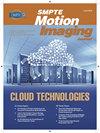HDR挑战与解决方案
Q3 Engineering
引用次数: 1
摘要
对于需要在标准动态范围(SDR)中分配有限对比度和颜色的内容制作者来说,高动态范围(HDR)提供了展示更多内容的机会。这意味着他们在讲故事时拥有更大的自由度和灵活性。然而,面向未来的HDR内容也面临着自己的挑战,例如,HDR显示能力的广泛变化以及在任何显示器(HDR或SDR)上播放任何产品(HDR或SDR)的愿望。这个问题的典型解决方案是色调映射,无论是色调压缩从HDR映射到较低的HDR或SDR亮度,还是色调扩展从SDR或HDR映射到较高的HDR亮度。考虑了各种色调映射技术,包括混合对数-伽马(HLG)、静态查找表(lut)和动态元数据,并分析了它们的相对优势和性能。本文描述了一种已在实践中引入的解决方案,即“特艺彩色高级HDR”。本文章由计算机程序翻译,如有差异,请以英文原文为准。
HDR Challenges and Solutions
For content producers who need to make drastic choices to allocate limited contrast and colors in standard dynamic range (SDR), high dynamic range (HDR) offers the opportunity to show more. This means greater freedom and flexibility for their storytelling. However, future-proof HDR content presents its own challenges, for example, the wide variation in HDR display capabilities and the desire to have any production, HDR or SDR, play optimally on any display, HDR or SDR. The typical solution to this issue is tone mapping, whether a tone compression to map from HDR to a lower HDR or SDR luminance, or tone expansion to map from SDR or HDR to a higher HDR luminance. Various techniques of tone mapping, including hybrid log-gamma (HLG), static look-up tables (LUTs) and dynamic metadata, are considered, and the relative advantages and performance are analyzed. A proposed solution that has been introduced in practice, “Advanced HDR by Technicolor,” is described.
求助全文
通过发布文献求助,成功后即可免费获取论文全文。
去求助
来源期刊

SMPTE Motion Imaging Journal
工程技术-成像科学与照相技术
CiteScore
0.60
自引率
0.00%
发文量
0
审稿时长
>12 weeks
期刊介绍:
The SMPTE Motion Imaging Journal is the key publication of the Society, consistently ranked by our members as the most valuable benefit of their SMPTE membership. Each issue of the Journal explores a theme in great depth, with peer-reviewed technical articles from leading academics, researchers and engineers working at the top companies worldwide.
You''ll expand your knowledge on topics like image processing, display technologies, audio, compression, standards, digital cinema, distribution and machine learning and much more. For additional coverage of each month''s topic, the Journal features more exclusive articles online.
 求助内容:
求助内容: 应助结果提醒方式:
应助结果提醒方式:


